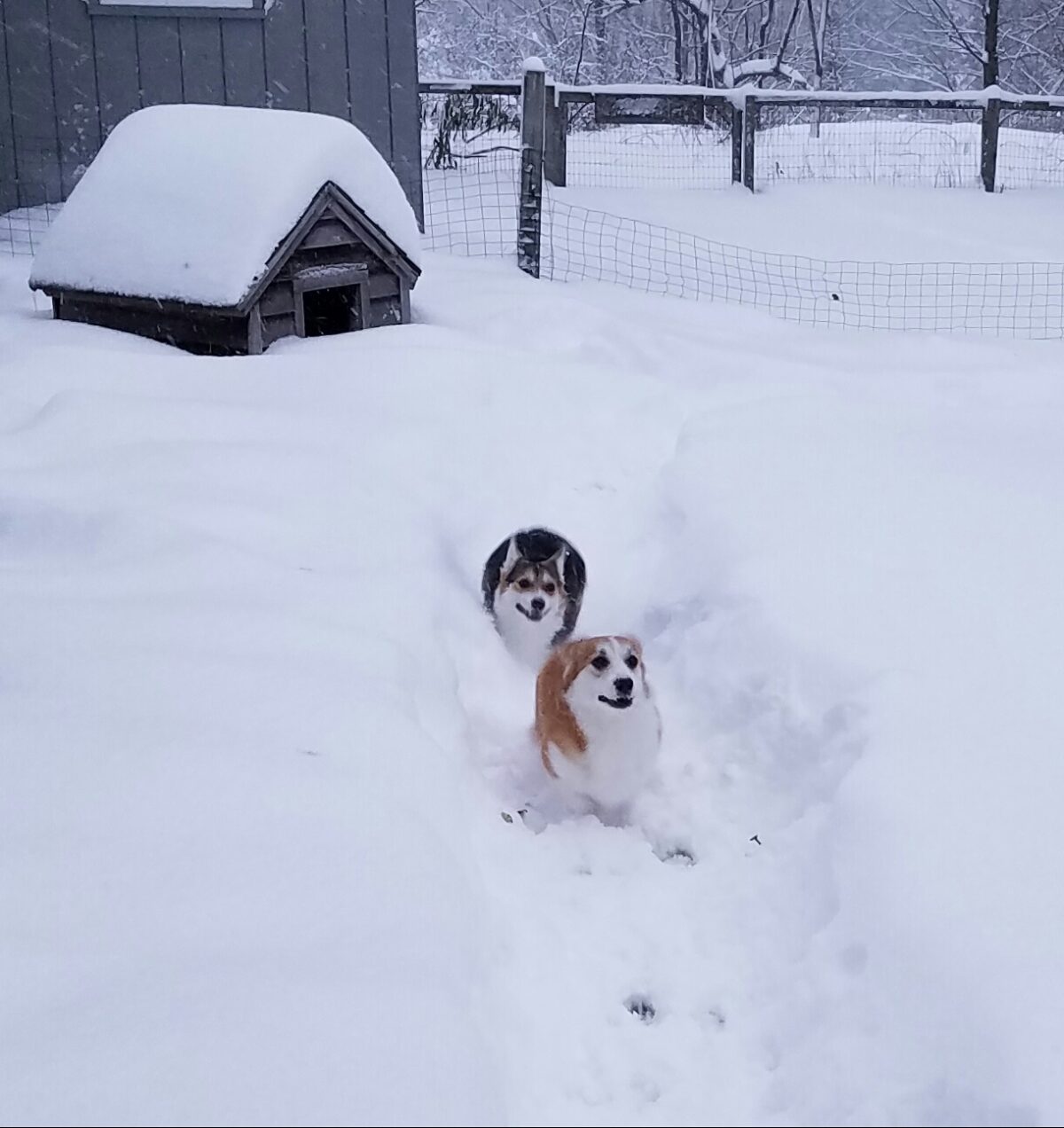Once snow starts swirling or ice forms, many families are at a loss as to how to safely exercise their small or short dogs. It may take some ingenuity, but you can exercise your dogs both physically and mentally all year round! Here are some suggestions.
Outdoors
Look for shoveled and cleared paths where your pets can walk. If your daily walks tend to be along roads, sidewalks, or treated paths in parks, you should consider booties for your dog. Some ice treatments can be painful or toxic to dogs. Get a couple of pairs so you can use one set while the other dries. If your dog is adamant about not wearing footwear, make sure you wash and dry his paws every time after a walk. You can also put protective coatings such as Musher’s Secret on paws prior to a walk.
Don’t forget a coat! Small dogs become chilled easily, especially if they have a short haircoat. A warm, waterproof jacket is ideal. Again, you might want to plan on two, so your pup always has a warm, dry outfit.
Fun in Your Yard
When snow drifts block your dog’s normal activity in your yard, think about a snow blown maze. You can get creative and plan break spots, a true maze, or simply go for a racecourse with a circle for running.
No snow blower? If you have a big dog, he can help you break a path for the shorter canines. You can do it alone too, but it is more fun if your large dog can help. You can also shovel a path, but a snow blower is much easier.
Indoors
The advantage of small dogs is that it’s easy to provide them with exercise indoors. Most homes have a hallway you can use for exercise. If it is not carpeted, put down some non-slip throw rugs so your dog doesn’t slip and slide.
Then toss a toy or roll a ball. With the hallway setup, your dog will return to you. If he is not a retriever, simply toss treats for him to find; just figure those treats into his daily food allowance! If you have a helper, you can each sit at one end of the hallway and call your dog back and forth.
Think Sniffing
Dogs love scent games. Sniffing is a natural activity for all dogs, and it provides mental as well as physical exercise.
You might want to try scent work training with the oils (anise, birch, and clove) used for competition, but you can also play these games simply by hiding a toy or treat for your dog to find. Dogs quickly get into the spirit of these games.
A snuffle matt with part of your dog’s daily kibble hidden in it can provide some excellent sniff practice and entertainment. Food puzzles are always fun.
Conditioning
This is also a good time to get out the balance ball, “peanut,” and other fitness equipment you might have. It is easy to practice some of the conditioning exercises inside with a small dog. Simple things such as having your dog place front paws on an upside-down bowl while she moves around it help with rear-end awareness, working both your dog’s body and brain.
This might be a good time for you to sign up for an online course or order a good book on massage or Tellington Touch. Hands-on activities help you to bond with your dog, get him used to being handled all over, and improve fitness.
Tricks
Tricks are fun and easy to do indoors. Many tricks can also help condition parts of your dog’s body such as “sit up” for core strength and balance. You can find many excellent trick-training books, videos, and online classes that use positive-reinforcement techniques.
Our dogs need mental and physical stimulation all year round. With a little ingenuity, you can keep your small dog happy and active even in winter months!
This article was reviewed/edited by board-certified veterinary behaviorist Dr. Kenneth Martin and/or veterinary technician specialist in behavior Debbie Martin, LVT.








